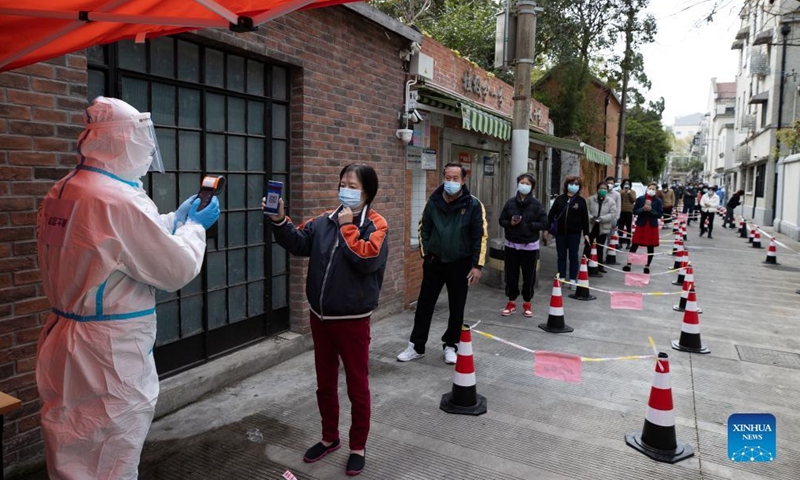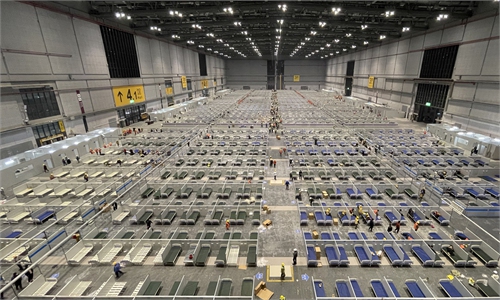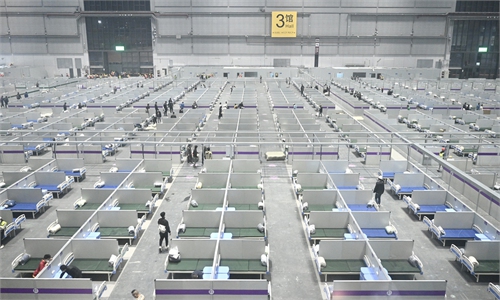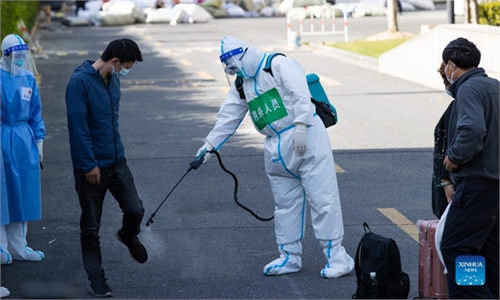
A community worker helps local residents register information before nucleic acid test in Changning District of east China's Shanghai, April 1, 2022. Shanghai has launched a nucleic acid testing campaign in areas west of the Huangpu River from Friday amid the second phase of the city's closed-off management.Photo:Xinhua
The Shanghai Big Data Center apologized on Sunday for the inconvenience caused by its newly launched nucleic acid code system, saying both WeChat and Alipay mini-programs have resumed normal while the Shanghai QR Code Application is still recovering.
Shanghai adjusted its on-site nucleic acid sampling registration method to the nucleic acid code in the Shanghai QR Code system on Saturday. Some citizens found that the code page sometimes showed that the system could not be opened due to network congestion, and others reported that scanning code registration was not successful, reported the China Central Television on its website.
The Shanghai Big Data Center immediately activated the emergency plan and the WeChat and Alipay mini programs have resumed normal operation by Sunday, said Zhu Junwei, a vice director of the center. The Shanghai QR Code Application is still recovering.
Shanghai registered 1,006 confirmed and 23,937 asymptomatic domestically transmitted COVID-19 cases on Sunday, a new record. There are more than 170,000 infections in the city, reports said.
According to Zhu, , the nucleic acid code system was developed and put into operation in a rush to meet the need of nucleic acid testing and optimize the testing process in Shanghai. Due to limited time, the system didn't go through a large-scale tests and appeared unstable on the first day of use. Shanghai Big Data Center apologized for the inconvenience caused by network congestion.
According to statistics, the city had completed nucleic acid sampling and registration as of Saturday for 2.04 million people, of which 75 percent were completed using nucleic acid codes.
In addition to the nucleic acid code, citizens can also use physical identification documents or report their ID numbers on the spot for manual registration. If the elderly have applied for the paper offline code with the application code in the early stage, they can also directly use the paper offline code, on the premise that the paper offline code is still valid. People can also use real-time dynamic application code of the Shanghai QR Code system or relative code, which must be opened in real time and screenshots are invalid.
The center noted that the design of relative codes requires verification of kinship relationship. If the system can automatically pass data comparison and verification, such as relatives of the same household, or those processed using birth medical certificate, the audit will be faster. For other cases requiring manual audit, the center will give the audit result within one day.
"In the next step, we will continue to optimize and improve the back-end system of the nucleic acid codes, and do our best to support and guarantee the registration of nucleic acid testing in the city," said Zhu.



